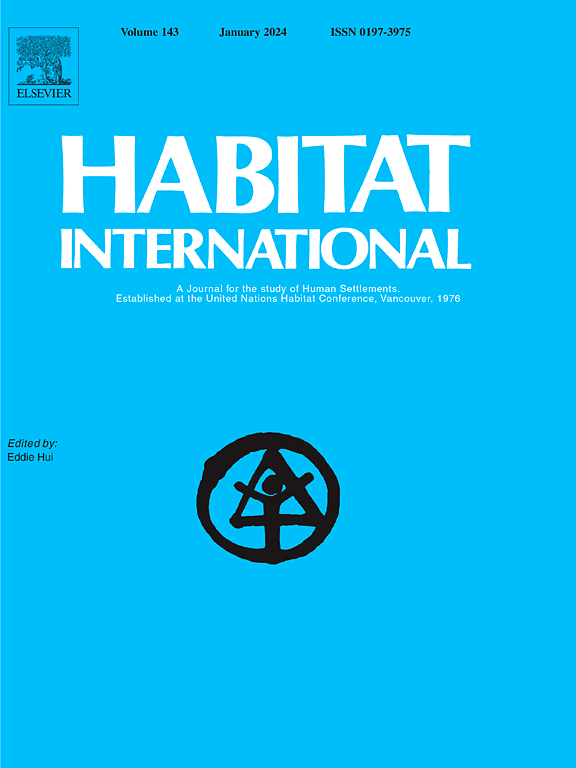评估伦敦城市便利设施对残疾人的影响:多尺度地理加权回归分析
IF 7
1区 经济学
Q1 DEVELOPMENT STUDIES
引用次数: 0
摘要
残疾人群体比一般城市人口更依赖城市基础设施。本研究从多源数据中选取17个自变量,并将其分为四组:绿地与便利设施、土地利用、基础服务和交通网络,考察了与伦敦残疾人群体相关的城市便利设施的空间分布。利用普通最小二乘(OLS)、地理加权回归(GWR)和多尺度地理加权回归(MGWR)模型分析,残障密度与便利设施(如超市、公交车站和地铁站)之间没有显著的相关性。然而,结果显示,在绿色空间可达性和商业区域过度集中在伦敦市中心明显不平等。这些发现强调了有针对性的政策干预的必要性,以改善对绿色空间的获取,增强城市规划对残疾人的包容性,并实施数据驱动的资源分配策略,以解决城市便利设施的空间差异。本文章由计算机程序翻译,如有差异,请以英文原文为准。
Assessing the impact of urban amenities on people with disabilities in London: A multiscale geographically weighted regression analysis
Disability groups rely on urban infrastructure more than the general urban population. This study examines the spatial distribution of urban amenities in relation to disability groups in London. 17 independent variables were selected from multi-source data and categorized into four groups: green space and amenity, land use, basic service, and transportation network. Employing Ordinary Least Squares (OLS), Geographically Weighted Regression (GWR), and Multiscale Geographically Weighted Regression (MGWR) models, the analysis found no significant correlation between disability density and amenities such as supermarkets, bus stations, and subway stations. However, the results revealed pronounced inequities in green space accessibility and an over-concentration of commercial areas in Inner London. These findings underscore the need for targeted policy interventions to improve access to green spaces, enhance inclusivity in urban planning for individuals with disabilities, and implement data-driven resource allocation strategies to address spatial disparities in urban amenities.
求助全文
通过发布文献求助,成功后即可免费获取论文全文。
去求助
来源期刊

Habitat International
Multiple-
CiteScore
10.50
自引率
10.30%
发文量
151
审稿时长
38 days
期刊介绍:
Habitat International is dedicated to the study of urban and rural human settlements: their planning, design, production and management. Its main focus is on urbanisation in its broadest sense in the developing world. However, increasingly the interrelationships and linkages between cities and towns in the developing and developed worlds are becoming apparent and solutions to the problems that result are urgently required. The economic, social, technological and political systems of the world are intertwined and changes in one region almost always affect other regions.
 求助内容:
求助内容: 应助结果提醒方式:
应助结果提醒方式:


